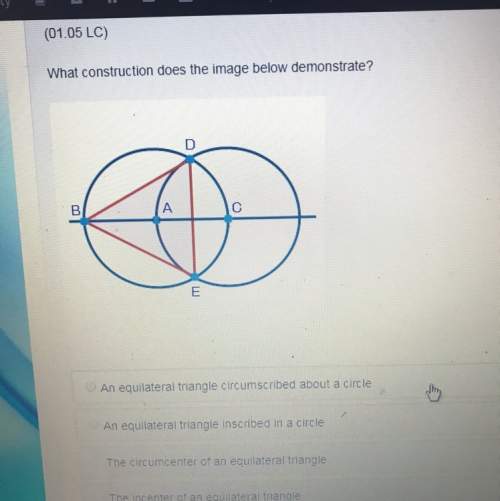
Mathematics, 01.05.2021 16:30 destinee71
A school has been selling raffle tickets to raise funds for the school library. Each ticket is sold for $5, and the school has sold many such tickets. Each ticket has a code. When a ticket is presented at the library book sale, it can be redeemed for $1, $5, or $10. The dollar amount being assigned to each ticket is determined by a lottery before the book sale.
Rachael has bought 30 tickets for her family. When she presents these 30 tickets at the book sale,
• 14 tickets are redeemed for $1,
• 12 tickets are redeemed for $5, and• 4 tickets are redeemed for $10.
She is wondering whether the school is actually losing money out of the raffle.
(a) Formulate the null and alternative hypotheses that can be used to determine whether the school is losing money out of the raffle. Note that the issue is whether the school is losing money, not whether the school is breaking even. Please think about what the implication is when formulating the null and alternative hypotheses.
(b) Find the p-value for the hypothesis test.
(c) What should Rachael’s conclusion be at α = 0.05?
(d) What should Rachael’s conclusion be at α = 0.01?

Answers: 1


Another question on Mathematics

Mathematics, 21.06.2019 14:00
Find the volume of the solid generated when the region bounded by y= x and y= 4√x is revolved about the x-axis the volume of the solid is: (type an exact answer cubic units)
Answers: 1

Mathematics, 21.06.2019 20:00
Someone answer asap for ! a discount store’s prices are 25% lower than department store prices. the function c(x) = 0.75x can be used to determine the cost c, in dollars, of an item, where x is the department store price, in dollars. if the item has not sold in one month, the discount store takes an additional 20% off the discounted price and an additional $5 off the total purchase. the function d(y) = 0.80y - 5 can be used to find d, the cost, in dollars, of an item that has not been sold for a month, where y is the discount store price, in dollars. create a function d(c(x)) that represents the final price of an item when a costumer buys an item that has been in the discount store for a month. d(c(x)) =
Answers: 1

Mathematics, 21.06.2019 20:00
If private savings 'v' = 0.75s and total savings 's' equals $4.20 billion, solve for public and private savings.
Answers: 2

Mathematics, 21.06.2019 20:30
The frequency table shows the results of a survey comparing the number of beach towels sold for full price and at a discount during each of the three summer months. the store owner converts the frequency table to a conditional relative frequency table by row. which value should he use for x? round to the nearest hundredth. 0.89 0.90 0.92 0.96
Answers: 2
You know the right answer?
A school has been selling raffle tickets to raise funds for the school library. Each ticket is sold...
Questions

French, 29.03.2021 20:20



Mathematics, 29.03.2021 20:20

English, 29.03.2021 20:20


History, 29.03.2021 20:20

Mathematics, 29.03.2021 20:20

English, 29.03.2021 20:20




Mathematics, 29.03.2021 20:20

Mathematics, 29.03.2021 20:20

Mathematics, 29.03.2021 20:20




Mathematics, 29.03.2021 20:20




